To a lot of people, fetch is THE game to play with your dog. In fact, some people have a dog so they can go outside, get some fresh air and play fetch. Others like it because it can tire the dog out without costing you too much energy.
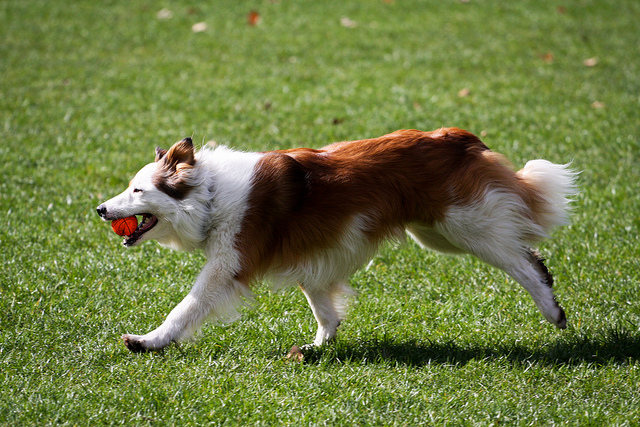
However, not all dogs naturally fetch. In fact, many dogs, of all breeds, are not “into the fetch.” Or maybe your dog likes to chase the ball, but never brings it back. Or doesn’t bring it back all the way.
I get asked a lot how to get a dog to fetch by clients that want to use it as an easy way to exercise, or need a retrieve for obedience trials.
The good news is, you can teach your dog to retrieve. The bad news, is it can take a while if you have a dog that is not toy driven at all.
Building Toy Drive
Since this topic alone could be an entire article, we will just touch on this briefly. If your problem is lack of interest in toys, join a sport puppy class or ask a local professional trainer to help you. Your probably going to need some one-on-one training that is catered to your dog’s personality and the reason for their non-interest in toys (for example, fear, stress, lack of energy, never played as a puppy, etc.).
However, if your dog is pretty well-adjusted and seems to have interested in toys but isn’t super excited about them, here are some tips to build drive.
Try different types of toys. Your dog doesn’t have to fetch a ball. Most dogs have a preference to certain toys – here is a list of common “types” of toys that dogs find pleasing:
- Soft or hard toys
- Toys that squeak or don’t squeak (sound sensitive dogs)
- Stuffed or not stuffed
- Round or long (a ball versus a stick)
- Crinkly ones (like the kind that sound like they have paper or a bottle in them)
- Food stuffed toys
Be exciting! If you seem excited about the toy it will help your dog be more excited about the toy.
Reward your dog from interaction with the toy. If your dog is more food motivated than toy, reward them with treats when they interact with the toy – this associates toys with your dog’s favorite thing, food. You can praise/reward them for looking at the toy, nosing it, pawing it, picking it up, etc.

Move the toy. Some dogs love the movement, drag the toy in front of your dog’s nose to see if they will chase it. Don’t go so fast or so far away that they can’t catch it – make it easy for them at first. You want them to be successful so they find it fun!
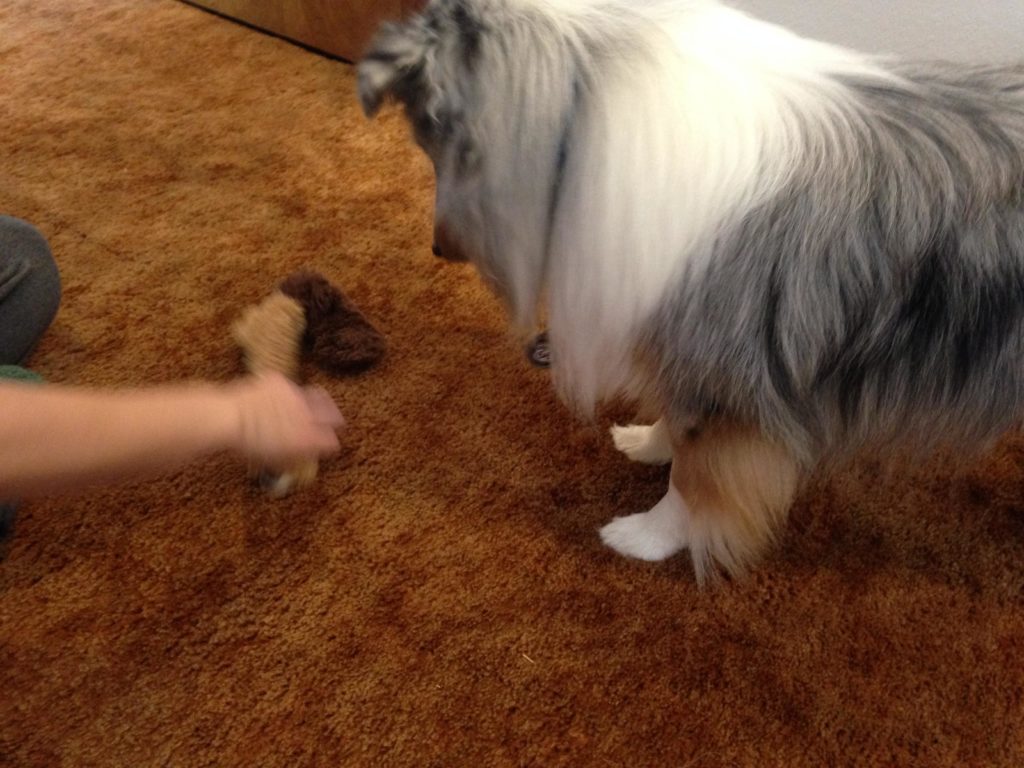
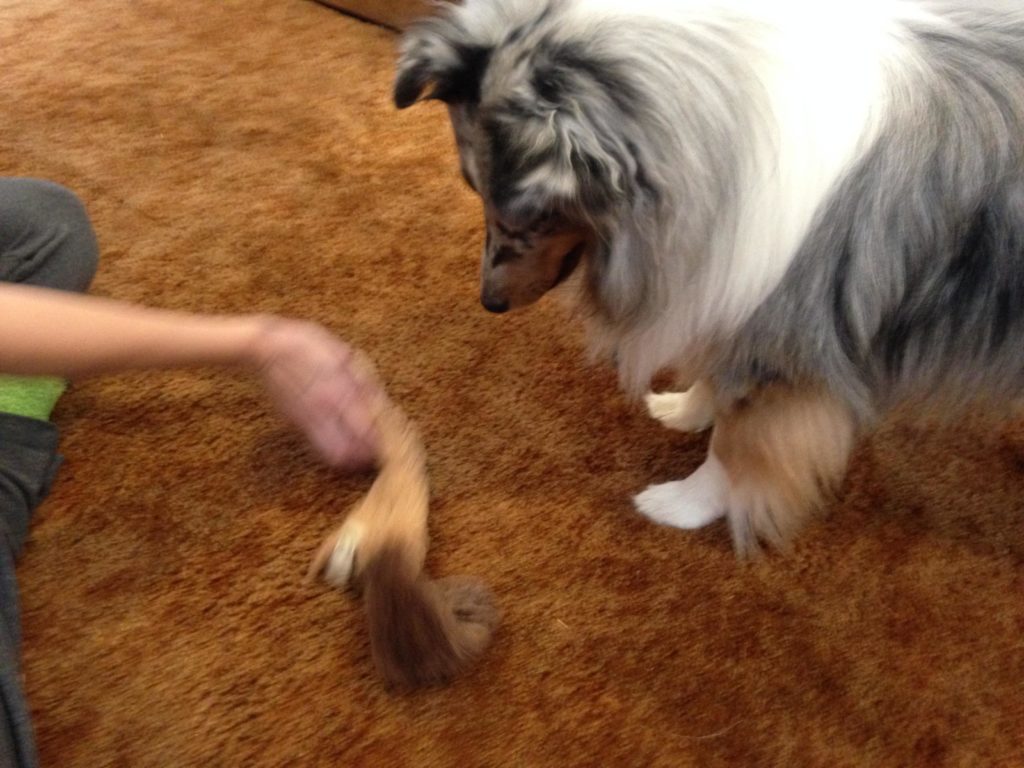
The Retrieve
Once your dog is playing with toys (or if they already were) the next problem is the retrieve. As mentioned above, some dogs like to chase, but never pick up the toy to bring it back. Or, they prefer the “keep away” game once they have possession of the toy.
To work on this, you are going to do something called “backchaining” – start with the end behavior that you want and work backwards until you have a full behavior.
In this case, you want your dog to pick up the toy and drop it in your hand or at your feet (decide how you want your fetch to look before you begin training).

Backchaining Fetch
Step 1.
If you had to build toy drive, this will be review. Have the toy and your dog right in front of you. Anytime your dog goes to look, touch, or pick up the ball praise and reward (if you use a clicker, great! The process will be much quicker!).
Reset your dog by removing the toy, waiting a few seconds, and reintroducing it to him.
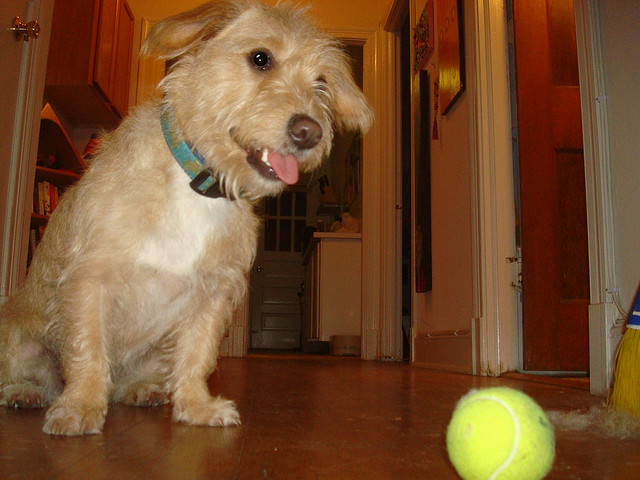
Step 2.
Start to up your criteria as your dog gets better. So, if for first few times he was just looking at, you are now going to stop rewarding the look and see if he will then touch it. If he does, click/reward that. If he fails three times, go back to rewarding for looking a few more times. Then, try to see if he will at least move toward the toy, and click/reward that. Remember, you want your dog to be successful so he likes the game.
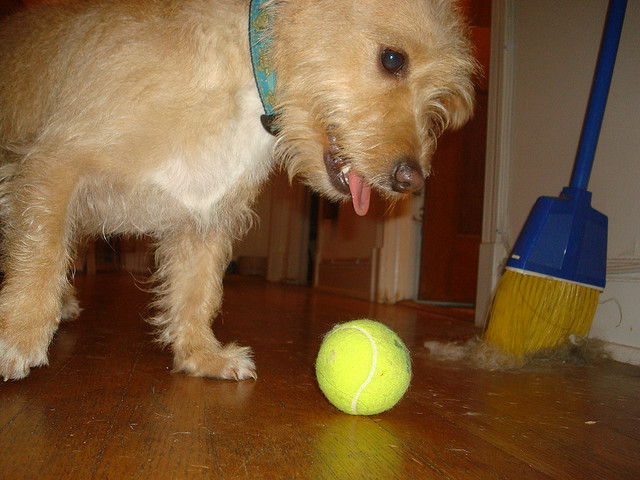
Continue to progress until your dog is picking up the toy.
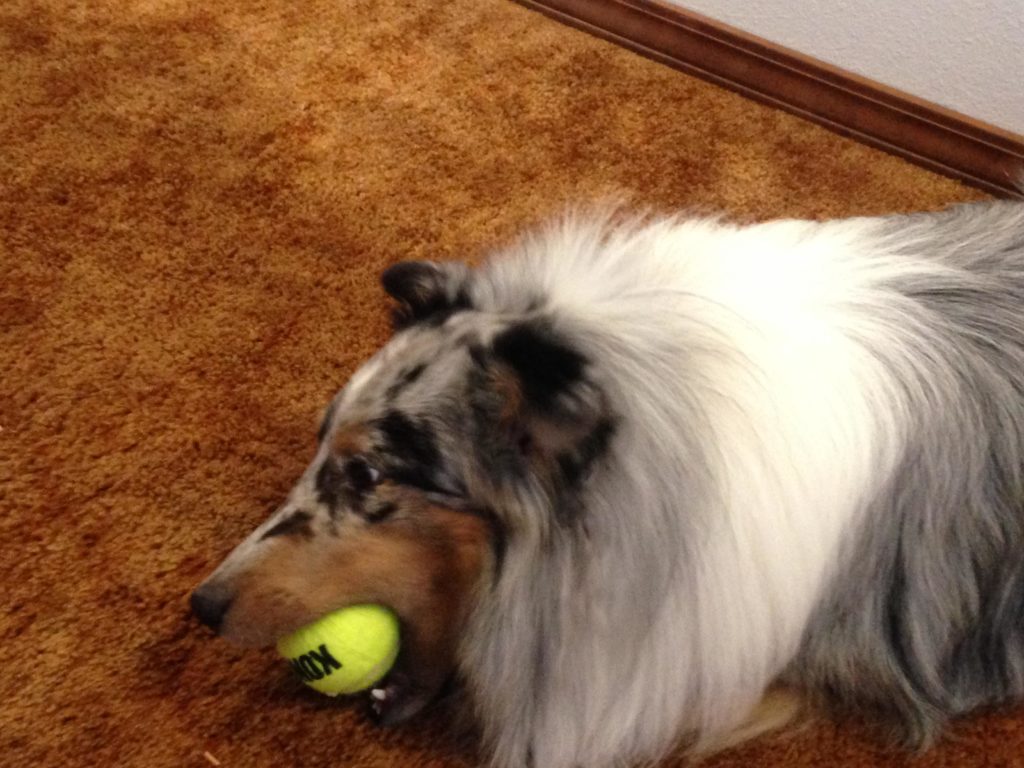
Step 3.
Once you have gotten to the point where your dog is picking up the toy, you are going to add in your end behavior. Let’s say you want your dog to pick up the ball and put it in your hand.
As soon as your dog picks up the toy, place your hand close underneath it, but don’t grab it. Most dogs will place the toy in your hand naturally, some may even let go. If so, big jackpot (several treats) and lost of praise!
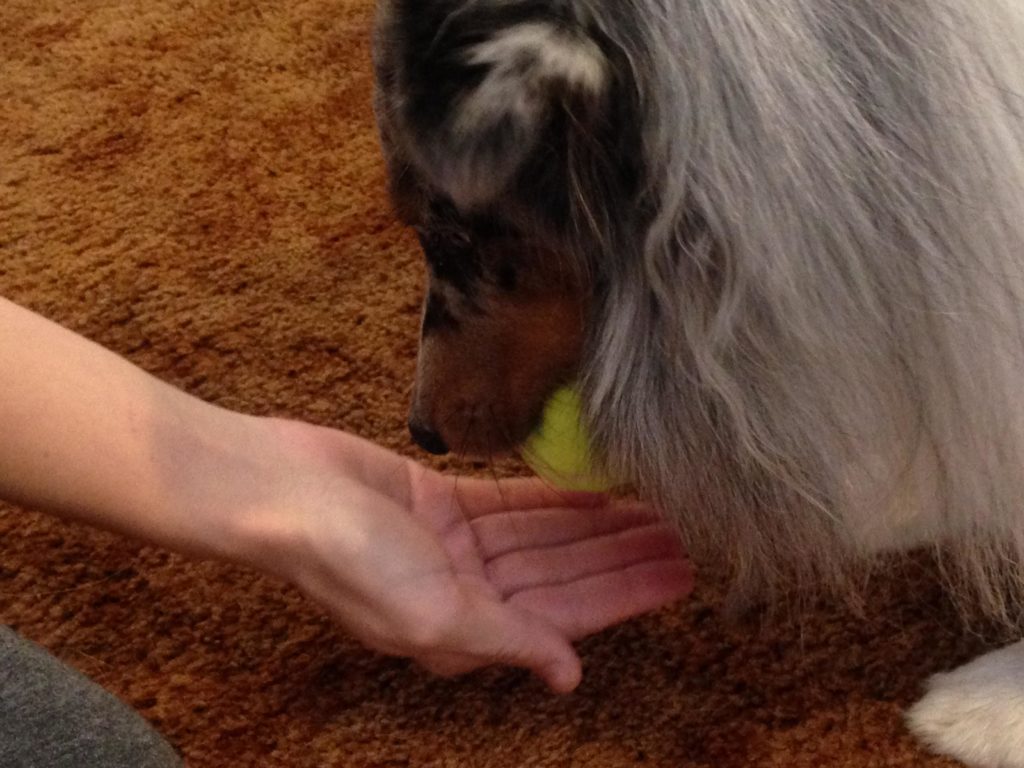
If your dog puts the toy in your hand, but doesn’t drop it, hold a treat by their nose and when they release the toy to take the treat, praise them and give them the treat.
However, don’t try to take the toy. You want your dog to place the toy in your hand and grabbing it can lead to them wanting to play tug instead.
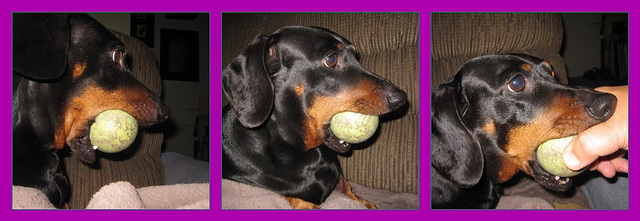
Soon, your dog should be automatically dropping the toy in your hand as soon as you put it underneath.
Step 4.
When that happens, it’s time to make it harder by putting your hand next to the toy, but not underneath it so your dog has to move to place the toy in your hand. This is how you will know if your dog is getting what you want or not.
If he fails three times, go back a step and make it easier for him by repeating the old step or breaking up the steps even more.
When your dog is moving to put the toy in your hand from several inches, you can add your fetch word – fetch, bring it, toy, etc., Say the word as your dog is placing the toy in your hand. This teaches him that word means “bring me the toy and put in my hand.”
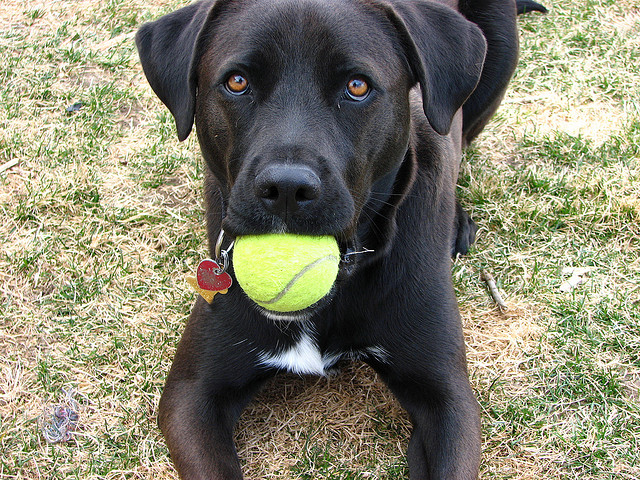
Gradually increase the distance of how far your dog has to go to put the toy in your hand.
Once he is picking up the toy and bringing it your hand for a foot or two, trying slowly tossing the toy and saying your fetch cue. If your dog does it – big party! If not, you may need to break it down even more by tossing the toy closer (some dogs you have to start with just a few inches!).
Keys To Success
Keep it FUN! This is a game, be excited when your dog is successful, quiet when he is not.
Don’t punish him. Your dog will not want to play if there is fear of punishment if he tries and does it “wrong.”
Keep training short at first. While the ball-crazed Border Collie may fetch all day, a dog who does not naturally find it a fun game will not. You don’t want him to get bored, so at first, only play a few minutes and then do something he really does enjoy, like a walk or a run, to get out the rest of his energy.
